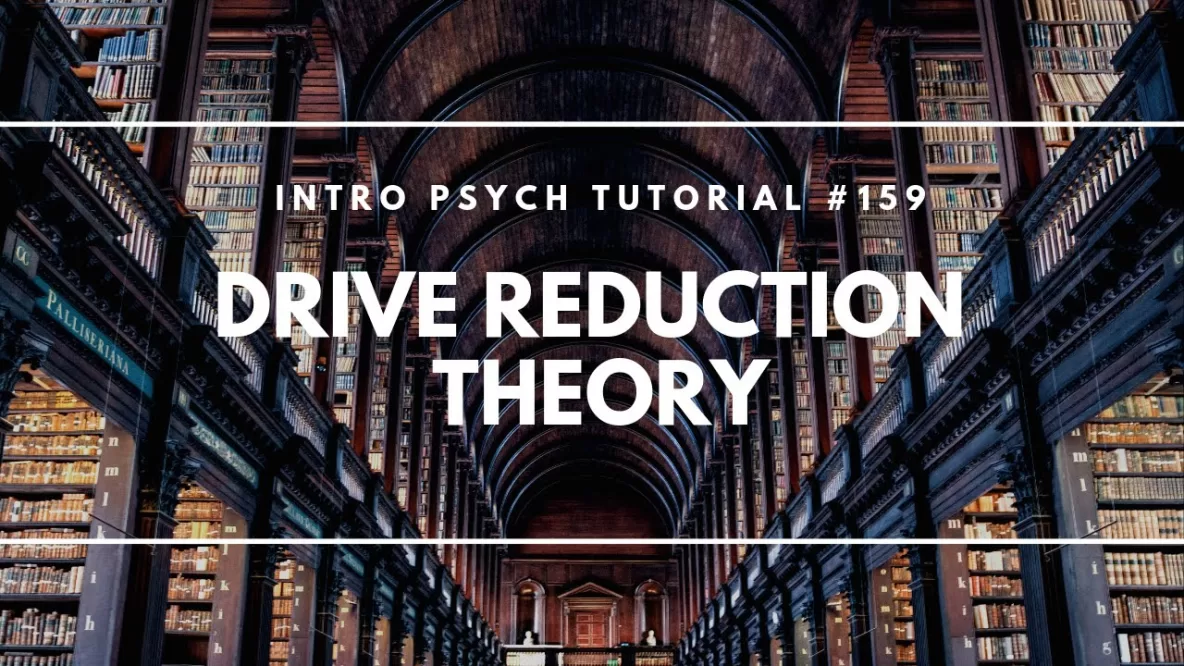In this video I describe Clark Hull’s Drive Reduction Theory. This theory proposes that behaviors can be considered rewarding because they reduce drives. Drives can then be regarded as primary drives or secondary drives, depending on whether they directly aid survival.
Don’t forget to subscribe to the channel to see future videos! Have questions or topics you’d like to see covered in a future video? Let me know by commenting or sending me an email! Need more explanation?
Check out my psychology guide: Master Introductory Psychology, a low-priced alternative to a traditional textbook: http://amzn.to/2eTqm5s
Video Transcript
Hi, I’m Michael Corayer and this is Psych Exam Review. In the previous video on motivation I talked about drives, so the idea of a drive was that it’s a motivation for behavior that can return you to some optimal state. So this is like the idea of homeostasis. So we have some particular state that we want to maintain, some optimal state, and then as we depart from that state that activates a drive. What the drive does is it motivates the behaviors that will bring you back to the optimal state.
So we could think about the hunger drive. So you have some particular storage of energy in your body that’s optimal. You want to maintain some particular level of energy storage. Now as you use up energy then that’s going to fall below a certain point and it’s going to activate the hunger drive. And so what the hunger drive is, is it’s a motivation for behaviors that can bring you back. So it can motivate you to eat things that will bring you back to your optimal energy storage state.
Now this brings us to the idea of Drive Reduction Theory. This is the idea of how we are motivated to do things that reduce drives. This was proposed in the 1940s by Clark Hull and here’s a picture of Hull here. What Hull proposed was that we could think about behaviors as being rewarding because they reduce drives. So when something is helping bring you back to some optimal state, whether it’s your hunger drive, or some other drive, then that bringing you back, that behavior is going to be rewarding.
And this is slightly different from the standard behaviorist explanation. So if we think about something like the hunger drive, it’s not quite right to say that food is a reward. That’s kind of the standard behaviorist explanation; food is a primary reinforcer, it’s naturally rewarding. Well what Hull proposed is that’s not quite right because food is only rewarding when it’s reducing the hunger drive. So, for instance, if I have some boring task for you to do and I say “if you do this task I’ll give you a hamburger”, let’s say you just finished a large meal. You’re not hungry at all. You might say “well, I don’t want a hamburger right now. I have no use for it. So, no thanks, I don’t want to do your boring task to get a hamburger because right now I’m not hungry”. If, on the other hand, you were really hungry, you know, you’re starving and I say if you do this task I’ll give you a hamburger then you might actually want to engage in the task. You might do it in order to get that reward.
And so what Hull would suggest was that the reward is not the food itself. The reward is the reduction of your hunger, that’s what’s rewarding to you. So this brings us to thinking about primary drives and secondary drives; very similar to when we had primary reinforcers or secondary reinforcers. So the idea of a primary drive would be a drive that motivates behaviors that aid survival. So a drive for food, right, that’s directly related to your survival. Or a drive to drink water when you’re thirsty. Or a drive to get warmth if you’re cold. These are going to help you survive and so these would be considered primary drives.
Then a secondary drive will be something that’s just associated with a primary drive. So you could say, you have a drive to earn money. Well, why do you want to earn money? Because you know that if you have money you can satisfy other drives more easily. So if I have money and I get hungry then I can satisfy that by buying food. If I have money and I’m thirsty I can buy water to drink. If I have money and I get cold I can buy more clothing, or I can buy a shelter or something like that. So that’s how a primary drive would be reinforcing.
Now a criticism here is that it’s not entirely clear exactly how that process works. So how is it that money is actually reducing this money-earning drive? That’s not really clear. If you have some drive to earn money and I hand you some money, you know, it’s unclear what’s actually happening that’s going to be rewarding to you because it’s reducing this drive. But nevertheless, this idea of Drive Reduction Theory gives us a different way to think about how behaviors are rewarding and think about, rather than the rewards themselves, like the food, think about their relationship to our drives and our motivation. So I hope you found this helpful, if so, please like the video and subscribe to the channel for more. Thanks for watching!

